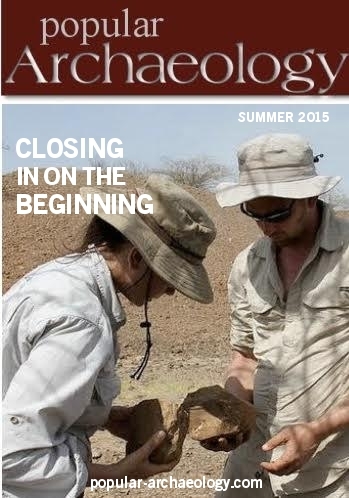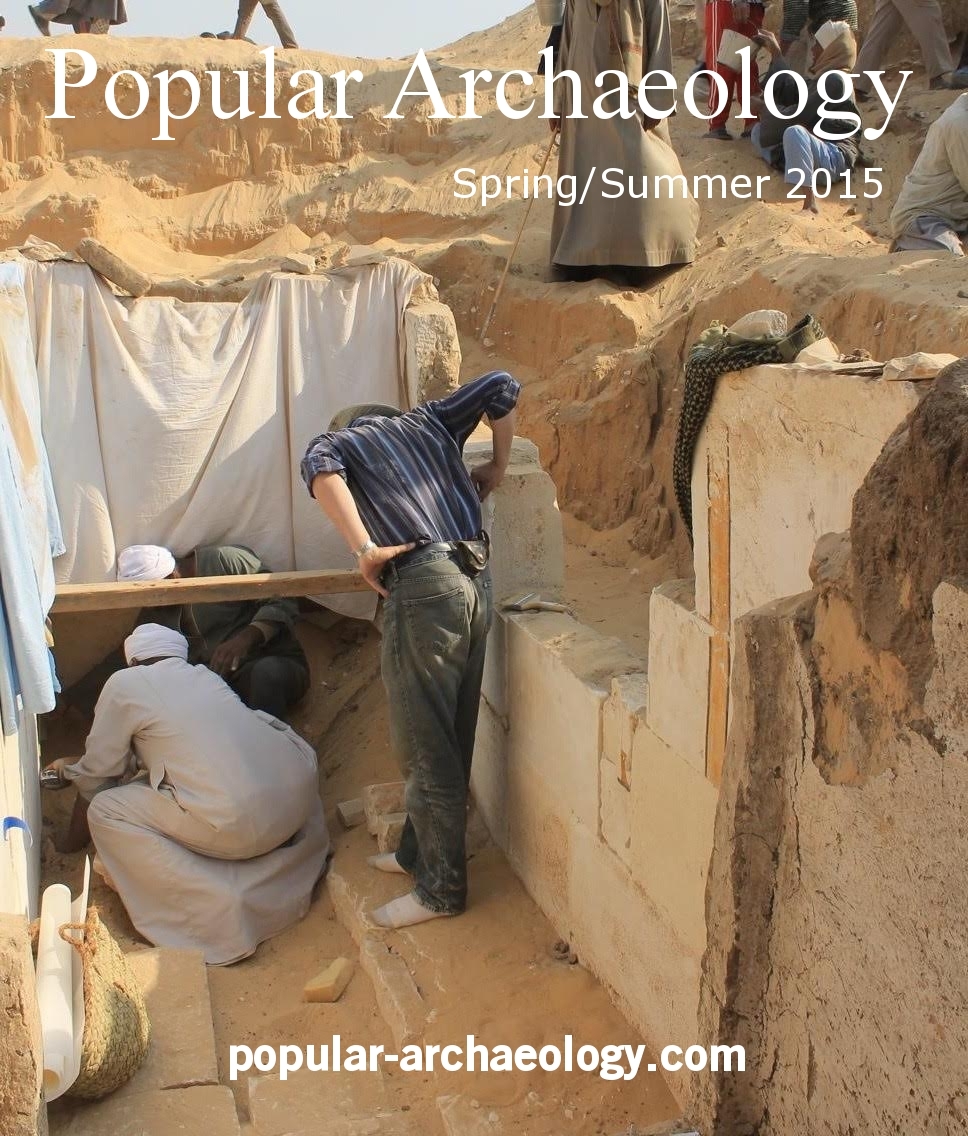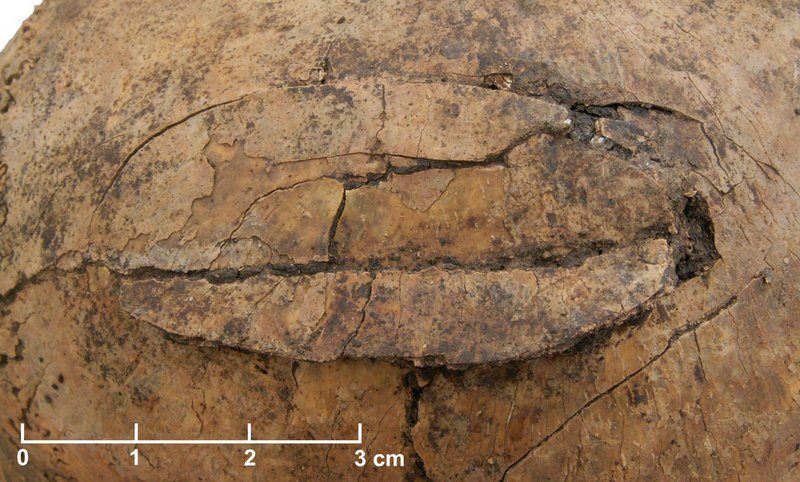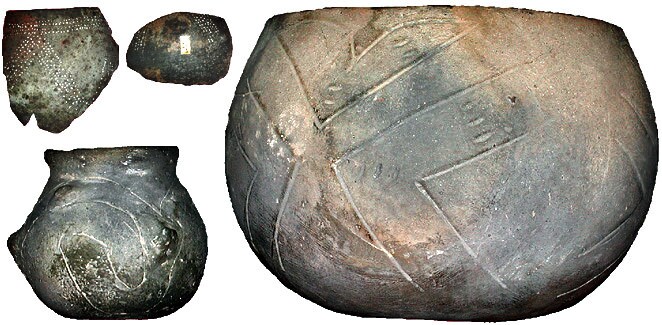
Teams of scientists have uncovered mass graves indicating mass murder at sites representing the same culture in time and space in Central Europe. But these instances have nothing to do with the Nazi-orchestrated holocaust of World War II. They have everything to do with a Neolithic people who lived about 7,000 years ago in what is today Germany and Austria.
Published in the Proceedings of the National Academy of Sciences, anthropologist Christian Meyer of the University of Mainz and colleagues have reported study results that suggest an entire Neolithic community of people, some time between 5207 and 4849 BC, may have been massacred and dumped, without ritual or care, into mass graves at the site today known as Schöneck-Kilianstädten in Germany. One excavated mass grave provides the certain evidence that 26 people, half of them adults and half of them children, were bludgeoned in the head by “typical weapon-tools of the time”.* Furthermore, before or after their deaths, many of them were mutilated or tortured by the smashing of their lower leg bones. Arrowheads were also found among the remains, suggesting the use of arrows in an act of warfare by the perpetrators.
Meyer and colleagues came to their overall conclusions after conducting an intense osteological analysis of the bones, initially excavated at the site in 2006.
With the exception of the bone leg mutilation, similar mass grave finds were made at two other sites dated to the same time period and affiliated with the same culture—one in Talheim, Germany, and the other in Asparn/Schletz in Austria. All three sites are identified with what is called the Linearbandkeramic culture, or LBK, a major archaeological horizon of the European Neolithic, which flourished from about 5500 to 4500 BC. Combined, the finds at the three sites present implications for the later phases of the culture.
“The new evidence presented here for unequivocal lethal violence on a large scale is put into perspective for the Early Neolithic of Central Europe and, in conjunction with previous results, indicates that massacres of entire communities were not isolated occurrences but rather were frequent features of the last phases of the LBK,” wrote Meyer, et al., in their report.*
_________________________________________
Cranial fracture in a 3-5y old child from the Neolithic mass grave of Schöneck-Kilianstädten, Germany. Image courtesy of Christian Meyer.
_________________________________________
Pictured above: Typical LBK Pottery. Collection University of Jena. Roman Grabolle, Wikimedia Commons
_________________________________________
Moreover, report Meyer and colleagues, “the significant absence of younger women in the Kilianstädten mass grave may indicate that these were taken captive by the attackers, as also has been suggested for the Asparn/Schletz site in Austria…we suggest that the repeated occurrence of almost indiscriminate massacres, the possible abduction of selected members, and the patterns of torture, mutilation, and careless disposal all fit into the concept of prehistoric warfare as currently understood within anthropology.”*
The finds beg the obvious questions: What was really happening? What was precipitating this mass violent behavior?
The authors suggest several possible causes, but point to a complex scenario: “Although the underlying supraregional causes for the recognized increase in mass violence in the late LBK undoubtedly were complex and multifactorial, a significant increase in population followed by adverse climatic conditions (drought), possibly coupled with the inability of long-settled farmers to practice the avoidance behavior by which hunter-gatherers typically evade conflict, seem to have been important components of the overall picture.”*
_______________________________________________________
*“The massacre mass grave of Schöneck-Kilianstädten reveals new insights into collective violence in Early Neolithic Central Europe,” by Christian Meyer, Christian Lohr, Detlef Gronenborn, and Kurt W. Alt., Proceedings of the National Academy of Sciences, 17 August 2015.
_______________________________________________________
 Read more in-depth articles about archaeology with a premium subscription to Popular Archaeology Magazine.
Read more in-depth articles about archaeology with a premium subscription to Popular Archaeology Magazine.
In addition, the latest Popular Archaeology ebook is now available.
______________________________________________
Travel and learn with Far Horizons.
____________________________________________
 This richly illustrated ebook version of a recent Popular Archaeology issue includes the following stories: The discovery of the tomb of a previously unknown pharaoh that is shedding light on a lost ancient Egyptian dynasty; how genetics is revolutionizing what we know about human evolution and our prehistoric past; one scholar’s controversial ‘New Chronology’ and how it supports the historicity of the biblical Exodus; how archaeologists are unearthing new history in Williamsburg, Virginia, a seat of British colonial power in 18th century America; the discovery of the remains of a major Roman legionary base in Israel; the unearthing of an ancient Judean fortified settlement in the borderlands between the biblical kingdoms of ancient Judah and the Philistines; and how archaeologists are uncovering evidence of what may have been an important administrative center of Judah during the 8th century BCE. Now available from Amazon.com!
This richly illustrated ebook version of a recent Popular Archaeology issue includes the following stories: The discovery of the tomb of a previously unknown pharaoh that is shedding light on a lost ancient Egyptian dynasty; how genetics is revolutionizing what we know about human evolution and our prehistoric past; one scholar’s controversial ‘New Chronology’ and how it supports the historicity of the biblical Exodus; how archaeologists are unearthing new history in Williamsburg, Virginia, a seat of British colonial power in 18th century America; the discovery of the remains of a major Roman legionary base in Israel; the unearthing of an ancient Judean fortified settlement in the borderlands between the biblical kingdoms of ancient Judah and the Philistines; and how archaeologists are uncovering evidence of what may have been an important administrative center of Judah during the 8th century BCE. Now available from Amazon.com!
____________________________________________








